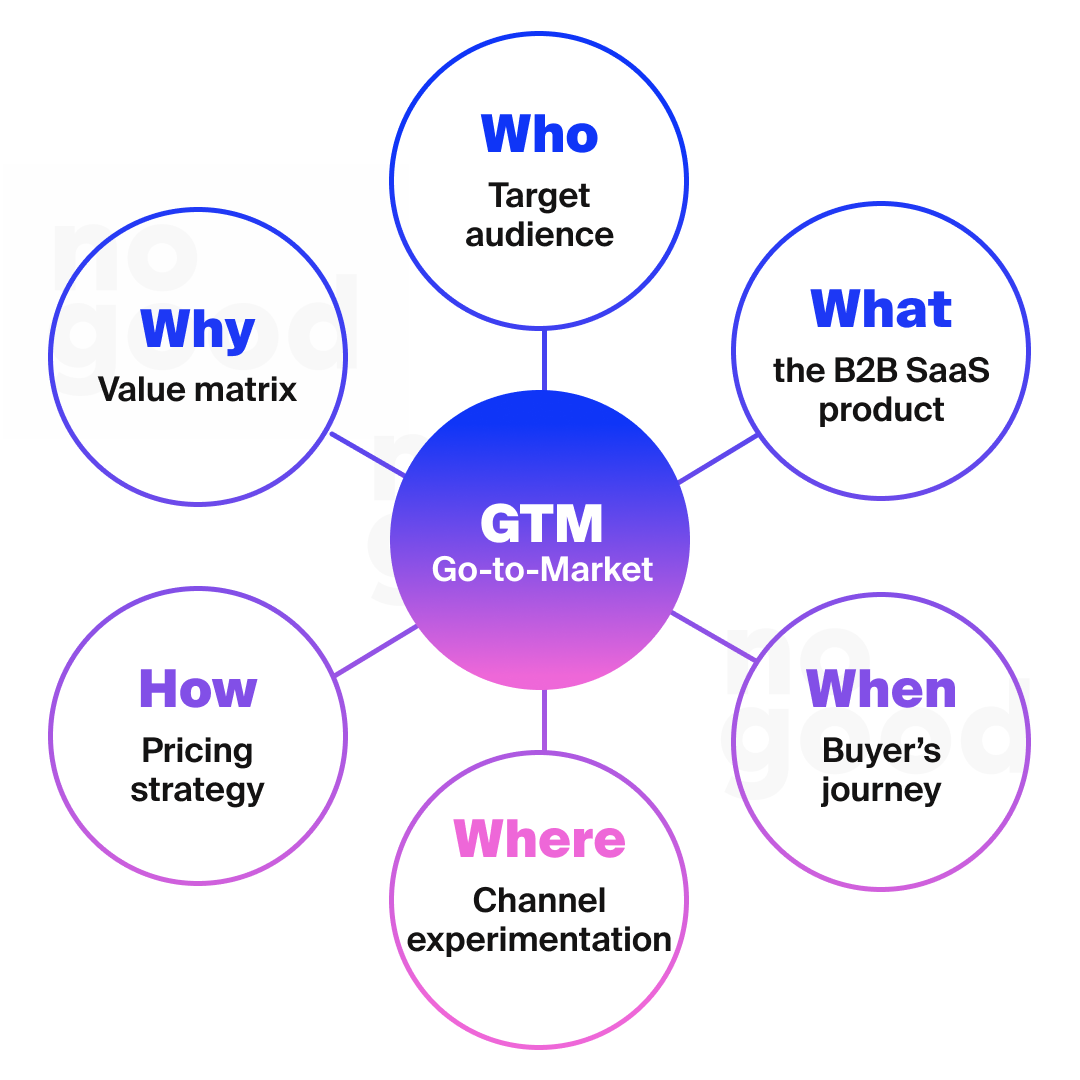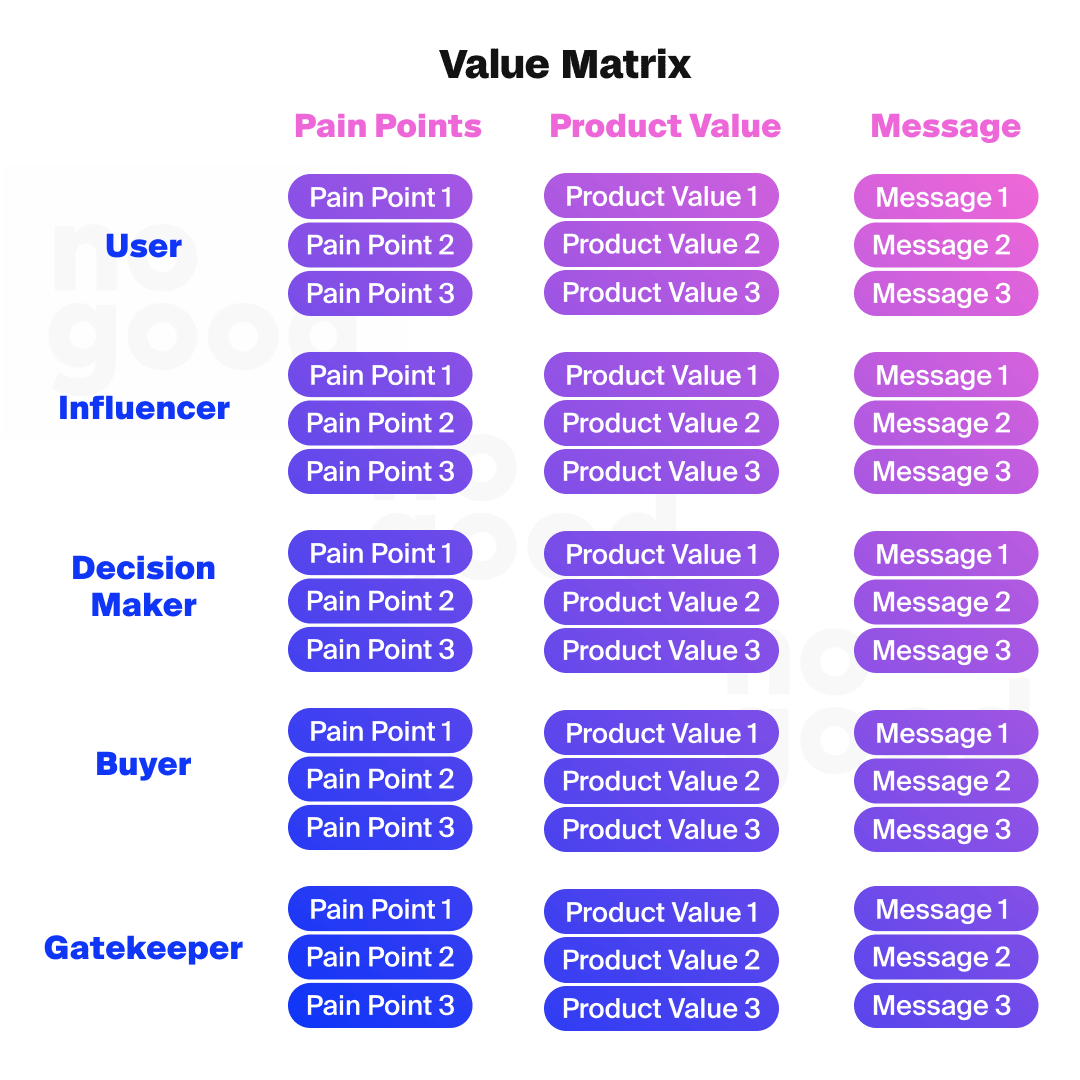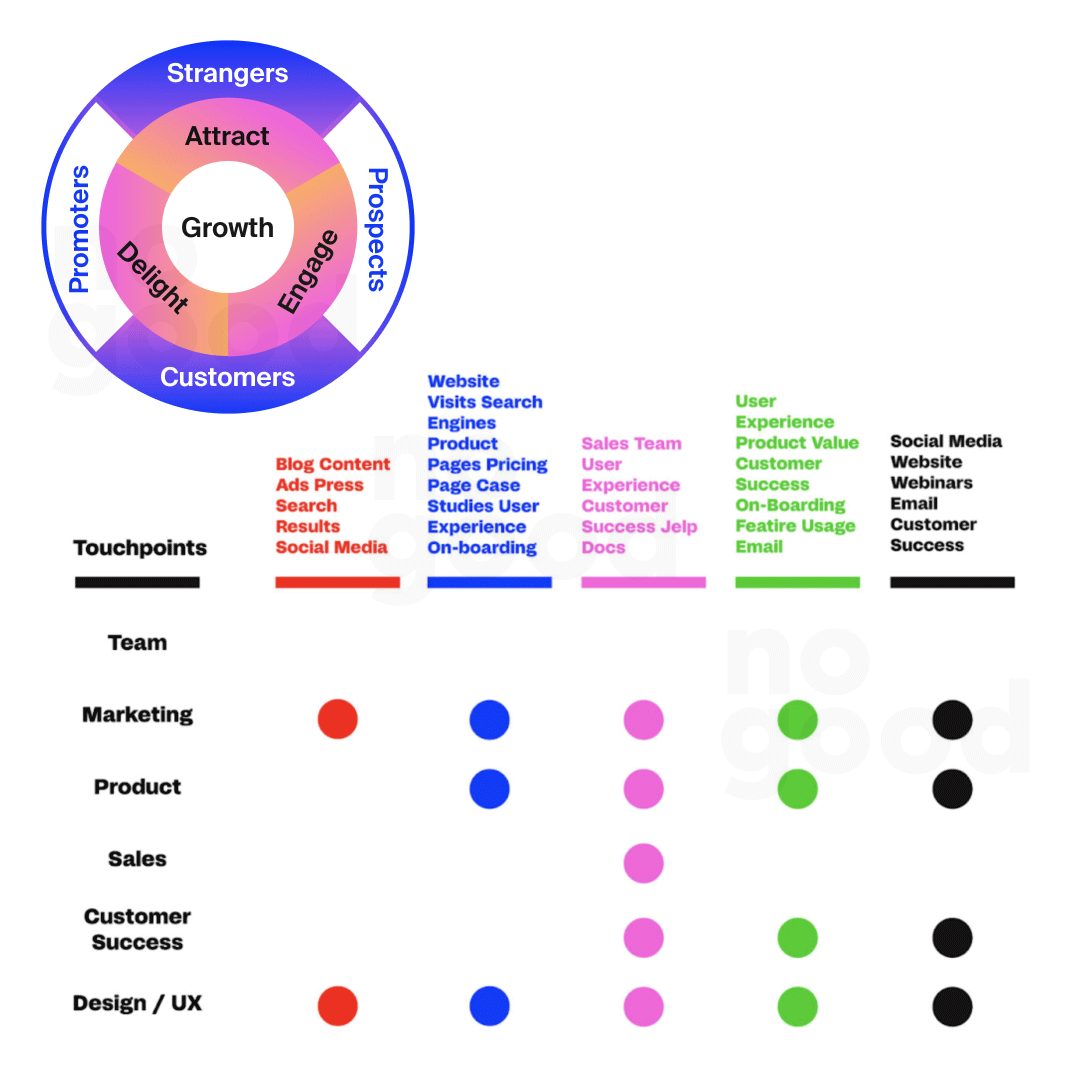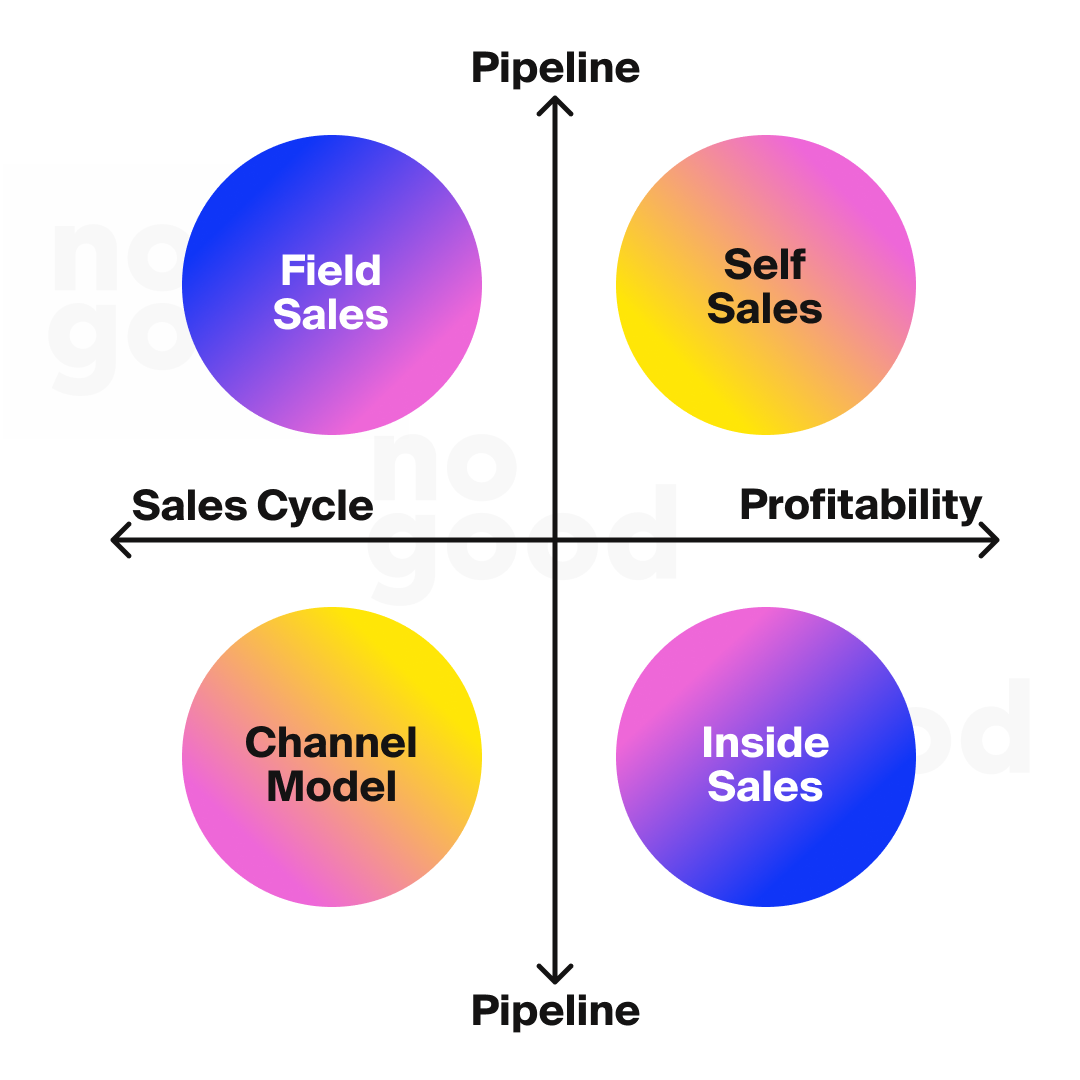Creating B2B SaaS Startups: The Key to SaaS GTM Strategies
70% of the apps that businesses regularly use today are SaaS based — and that number is expected to increase to 85% by 2025. B2B SaaS is evidently a rapidly growing industry with new companies getting valuations that even experts didn’t see coming years ago. Given the immense growth potential of the SaaS space, what does this mean for B2B SaaS startups that are attempting to market themselves to seasoned businesses and enter into a crowded market?
B2B SaaS businesses face very unique challenges when it comes to marketing, meaning that they need a specific set of tools and skills to overcome those challenges and achieve their goals. From converting free users into paying customers to perfecting your sales funnel to retaining users to maximize lifetime value, the customer journey for B2B SaaS companies is complex and difficult to optimize. With tens of thousands of new startups entering the market every day, leveraging the potential for a company to truly scale and become a great standalone business is more important than ever. A great product certainly serves as a good foundation for growth, but having a clear go-to-market strategy is essential to stay on top of a rapidly-evolving and competitive SaaS market.
What is a B2B SaaS Startup?
B2B SaaS refers to companies that offer a subscription-based service that targets businesses as their end user. The purchasing company is typically able to access a cloud based service so long as they pay a regular subscription fee. SaaS cloud technologies give both providers and customers an advantage, as providers can focus on providing continuous value through software enhancements and new features, while customers can reap the benefits of the software without requiring additional installation or hardware upgrades.
In an ideal case, a B2B SaaS startup — or any B2B SaaS company, for that matter — should offer services that are actively solving one or more of a company’s problems, whether that be through increasing workflow efficiency, reducing costs, or facilitating collaboration. Some examples of SaaS applications include collaboration and chat tools, video conferencing tools, or real time data tools. Given this challenge, the key to a successful SaaS startup is to make the benefit of their offering known to their target customers. How might they do that? The answer lies in a well thought out and targeted go-to-market strategy (or GTM).

What is a Go-To-Market Strategy?
A go-to-market (GTM) strategy is a step-by-step plan created to successfully bring a new product to market. A good GTM strategy usually identifies a target audience, includes a marketing plan, and outlines a sales strategy. Although every product and market is different, a GTM strategy should identify a market problem and position the product as the best solution to that problem.
If you are launching a B2B SaaS startup, the last thing you want to do is launch it without a proper GTM strategy. Without proper planning, it’s impossible to know if you are targeting the right audience, are too early or too late in a particular market, or are targeting a market that’s too saturated with similar solutions — and as a startup you do not want to risk wasting time and resources launching an unprofitable product.
Even the best ideas can fail if not implemented effectively — it’s a well-known fact that 90% of all startups fail, and 21.5% of them fail within the first year. Creating a GTM plan can prevent many of the mistakes and failures that can occur when launching new products. Poor product-market fit and oversaturation can hinder a launch-even if the product is well designed and innovative. While a GTM strategy is no guarantee that a launch will fail, it can help manage expectations and address any inconsistencies before you invest in bringing a product to market.

What’s the difference between a go-to-market strategy and a marketing strategy?
A marketing strategy focuses on how a company can reach a particular market over time and deliver on its value proposition. A go-to-market strategy focuses on how to bring new products or services to market. The former is long-term and company-oriented, while the latter is short-term and product-oriented. A startup’s GTM strategy is a subset of their general marketing strategy, but there are unique differences between the two:

Why do you need a B2B SaaS go-to-market strategy?
A go-to-market strategy is important for every new startup or product launch, but it is particularly essential for B2B SaaS companies where the entirety of their software’s value relies on how well it can solve a business’ problem.
The benefit of having a clear go-to-market strategy as a B2B SaaS startup is essentially the clarity of knowing who your brand is, who your ideal customers are, and how you’re going to communicate the former to the latter. Startups often involve multiple stakeholders, such as investors, partners, employees etc.; a go-to-market strategy ensures that all the relevant stakeholders are aligned on one vision, one timeline, and one strategic path to success. This level of internal clarity and stakeholder alignment is an early marker of success for brands looking to scale their business given all the competing priorities that occur amidst a typical startup environment.
To break it down further, here are just a few of the benefits of having a go-to-market strategy as a B2B SaaS startup:
- Reduced time, cost, risk and investment needed to pursue marketing initiatives
- Enhanced ability to strategically react to customer preferences or industry trends
- A solid foundation for future growth and scaling from leveraging historical insights and experimentation results
- A clear and established path forwards with tangible next steps
- An in-depth understanding of your target customer or market
- Guaranteed regulatory compliance due to a precise understanding of industry requirements
When do you need a go-to-market strategy?
Having a GTM strategy is essential for a startup at the stage of launching a new product or launching an existing product in a new market. The key to a good GTM strategy is to ensure that it is adaptable at a moment’s notice. Given the volatility of individual markets, committing to a rigid, inflexible strategy can backfire. A company must have a functioning system that can take into account new information and adapt accordingly. That being said, a GTM strategy is rarely a one-and-done task — there are also instances where a GTM plan needs to be modified to adapt to the latest product, market, audience, and industry shifts.
These are some examples of when a GTM plan needs to be revised or modified:
- You need to develop the right channels and optimize them over time
- You plan to expand your service portfolio (in terms of new products/services, regions served, etc.)
- You do not have competent resources to achieve consistent pipeline growth
- You are planning to expand into a new demographic
What are the 5 go-to-market strategies?
- Target audience & competitor research (link)
- Pain points & value messaging matrix (link)
- Rapid experimentation of channels & messaging (link)
- Defining the buyer’s journey (link)
- Choosing a sale’s strategy (link)
- Target Audience & Competitor Research
When preparing your product for market, the first thing you should do is think about your customers and capture your buying group personas. According to Gartner, the typical buying group for a complex B2B solution includes 6 to 10 decision makers, each of whom has 4 or 5 pieces of information that they have gathered independently and need to reconcile with the group. At the same time, they are making choices about technologies, products, suppliers, and services. These decision makers are called the “buyer group” and consist of 6 B2B buying jobs. The jobs vary depending on the product, industry and vertical you are selling to. Research each job function to get an overview of their responsibilities, their goals, and their issues. It’s important to understand who these people are, what motivates them, and what their problems are, because they are the key decision makers who will bring your product to market.
Part of audience research is also doing a deep dive into the competitors that are targeting the same customers you’re looking to acquire and retain. Ask yourself what their strengths and weaknesses are, then answer those questions with a plan of action to exceed those strengths and fill those weaknesses with your value proposition.
- Pain Points & Messaging Value Matrix
The value matrix is used to communicate the purpose and reason for the SaaS product to all stakeholders, including the specific customer problem that will be solved and the need that will be met. It is a breakdown of each buying persona, their business pain points, and exactly how your product provides the solution to those problems. The messaging needs to capture the pain point and value in a meaningful way, and it should be different for each buying persona depending on their individual needs and wants. Having a value matrix can help your business identify, streamline and categorize various value propositions so that you are able to communicate the right message, at the right time, to the right audience.
Here is an example of a value matrix:

- Rapid Experimentation of Channels & Messaging
Even with extensive audience research and a detailed value matrix, it is still important to perform rapid experimentation across different channels, audience segments and messaging in order to determine the ideal way to launch your product to the wider market.
Channel: Depending on your industry, each B2B marketing channel may differ in its effectiveness with your target audience and the way each B2B company operates. Email marketing, SEO, and social media lead the way in attracting leads. When it comes to driving sales, email marketing, SEO, and PPC are best. Paid digital advertising channels can include LinkedIn, Google / Bing Ads, Twitter and Facebook. A quick experimentation with the different channels will help you decide which are most beneficial when comparing the different Key Performance Indicators (KPIS) in terms of engagement and conversion rates to determine which value proposition and pain points work best. The key is to spend your money where you will get the greatest return on investment (ROI).
Messaging: Your messaging is the single most important factor contributing to your conversion rate. Create A/B tests with different value propositions and messaging focuses while holding certain variables constant (e.g. creative visuals or ad formats). Your messaging could center itself on a specific pain point, a key feature, a competitive advantage or a differentiating benefit; there is not one type of messaging strategy that is better than the other — only experimentation can determine what fits best for your target audience and product.
- Defining the Buyer’s Journey
As new data from your marketing and sales efforts will come in, you’ll need to dive deeper to understand a prospect’s journey from both the buyer’s and the company’s perspective. In the past, a B2B sales funnel consisted of the following steps: Awareness, Interest, Consideration, Intent, Evaluation, and Purchase. Companies divided buyer journey campaigns into top of funnel, middle of funnel, and bottom of the funnel. That being said, this traditional model of the B2B SaaS funnel is now changing.
The new sales funnel, especially for a B2B SaaS company, takes the form of a flywheel model where customers go through three stages: attract, engage, and delight. This is a more holistic approach that puts the customer first and turns your leads from prospects into MQLs, SQLs, and active promoters of your brand. By nurturing existing customer relationships and focusing on fostering loyalty, the ideal B2B SaaS flywheel will open up new opportunities for growth and retention that are sustainable and long-lasting.
For example, Notion adopts the flywheel model of a sales funnel by heavily investing in their community-building initiatives. Through their community events, free Notion goodies, and interest-based groups, Notion looks to continuously provide value to existing customers so that they become loyal advocates of the brand.

Using this new model of a sales flywheel, you can then break down your marketing and customer relationship management initiatives into the three goals to attract, engage, and delight. Mapping out your buyer’s journey according to clearly defined categories can help you surface the right kind of content at the right time, so that you are meeting your customers exactly where they are with exactly the type of value they are looking for.
- Choosing a Sales Strategy
There are generally four go-to-market sales strategies, each tailored to a different product and business model: Self-service, inside sales, outside sales, and channel model. There is no one method that is right for every product or market. Therefore, it is important to consider factors such as complexity, cost, sales cycle, profitability, and scalability. Evaluation and segmentation, combined with new thinking about the roles you need in each channel, can help you provide better service to your diverse customer base while creating opportunities to reduce costs.

It’s time to start creating your GTM strategy
We live in a digital world where every click, tap, and swipe is tracked and analyzed. That’s why a solid understanding of your product, your audience, your analytics, your competitors, and the fundamental problem that your product is solving is critical to the success of your business. The good news is, now that you know how to create a successful go-to-market strategy for your B2B SaaS startup, you can work towards a clearly defined goal to achieve growth and operate more efficiently and effectively as a business.
As always, if you need guidance or support on how to create a winning GTM strategy, we’re always here to help.






Nice bro thanks.
Great information shared.. really enjoyed reading this post thank you author for sharing this post .. appreciated
You have a gift for writing. Your article is not only informative but also enjoyable to read.
I just wanted to take a moment to express my gratitude for the great content you consistently produce. It’s informative, interesting, and always keeps me coming back for more!
Keep up the amazing work! Can’t wait to see what you have in store for us next.
As a new reader, I am blown away by the quality and depth of your content I am excited to explore your past posts and see what else you have to offer
I love how you simplify things! This was an excellent and informative post.
This article helped me see things from a different angle, thank you!
This post is filled with so much value. I’m definitely bookmarking it!
You’re so awesome! I don’t believe I have read a single thing like that before. So great to find someone with some original thoughts on this topic. Really.. thank you for starting this up. This website is something that is needed on the internet, someone with a little originality!
This is a very helpful article, thank you.